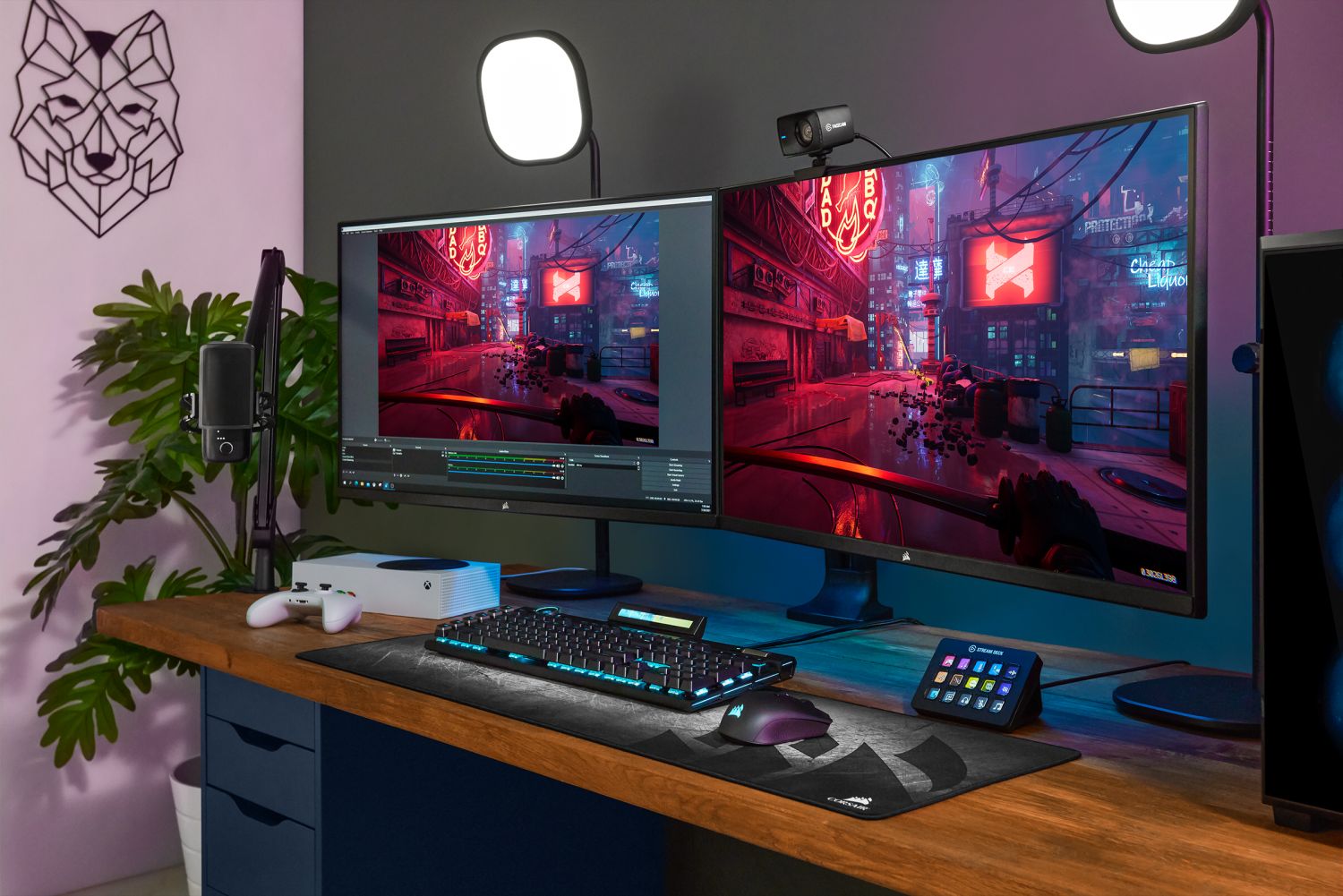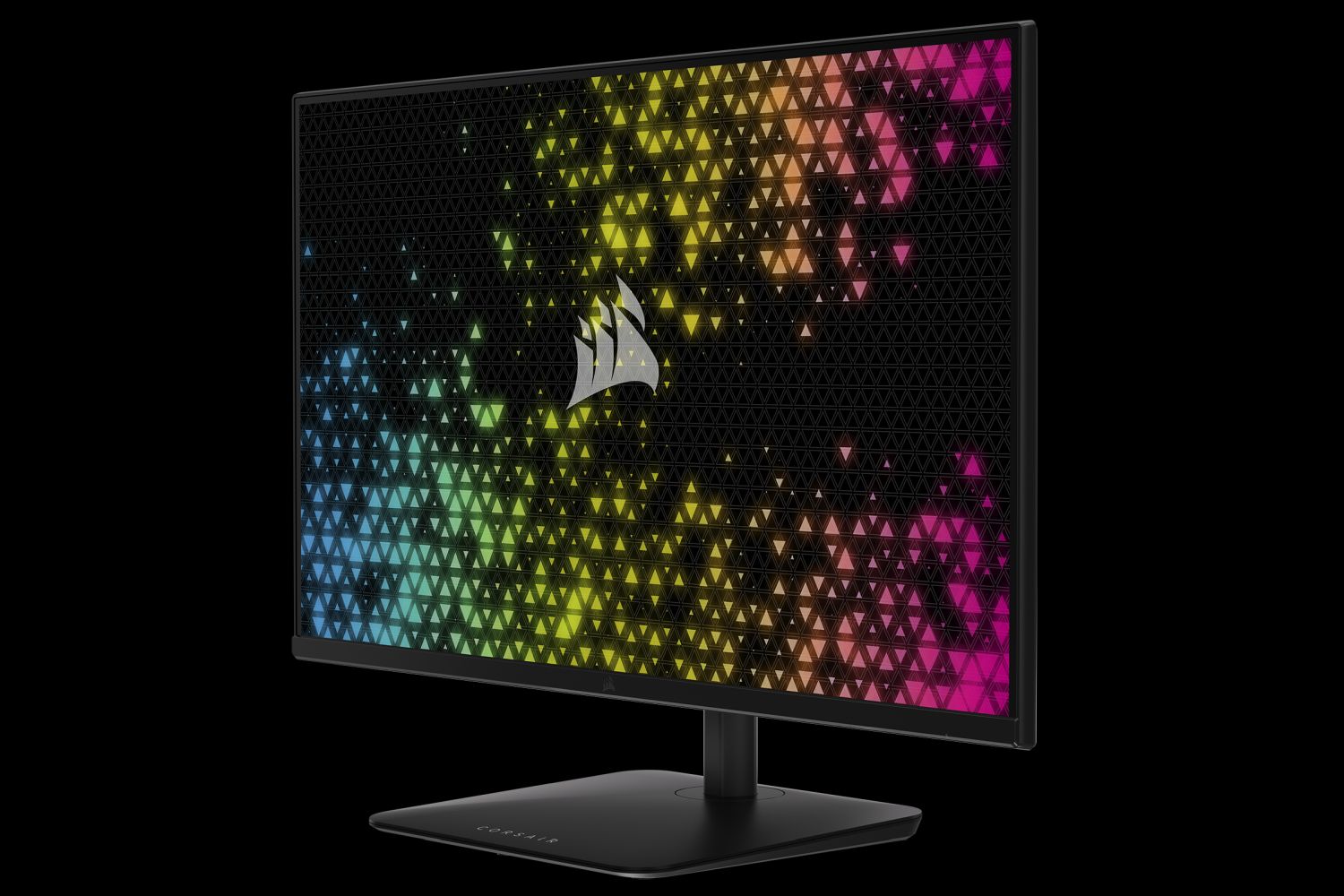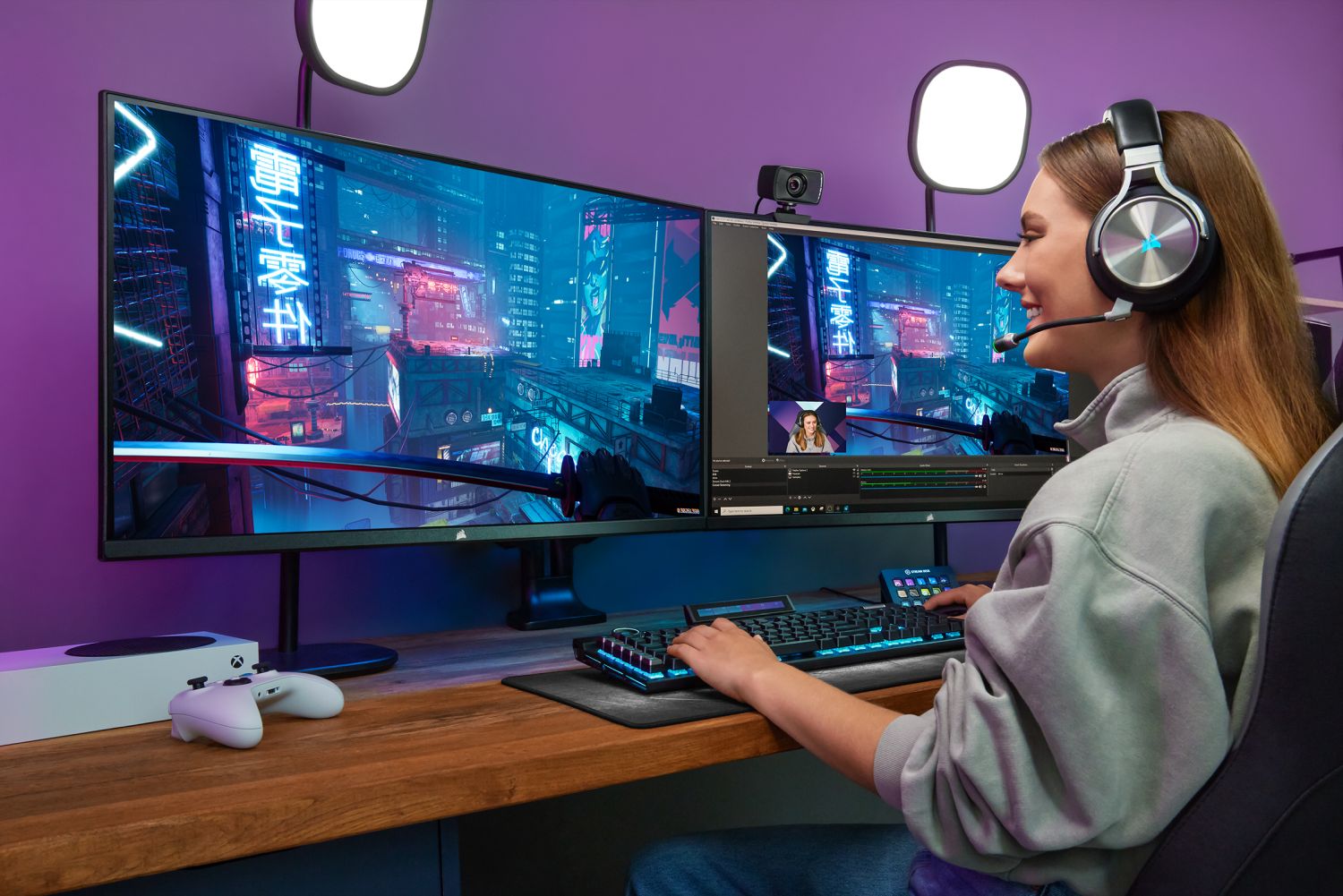Starting with the 4K model, the 32UHD144, its designation more or less tells you all you need to know about the gaming monitor. At 32-inches, the Xeneon monitor has a maximum resolution of 4K (3840 x 2160) but more importantly, it also has a variable refresh rate of 144Hz. Still on the Xeneon 32UHD144, Corsair has chosen to use Samsung’s Quantum Dot technology to build its IPS LED display. This provides the monitor a 100%sRGb and 100% Adobe RGB colour space. Further, it is also an HDR600 monitor, with a peak brightness of 600 nits, which also translates into a wide brightness range and colour gamut. Moving on, the Xeneon 32UHD144 also retains the same unique die-cast aluminium stand that was first introduced with the 32QHD165, a pride point for Corsair, as it claims the design allows for more efficient cable management. Ports-wise, the Xeneon 32UHD144 is equipped with one DisplayPort 1.4 port, two HDMI 2.1 ports, a USB-C port, and an integrated USB 3.1 hub that allows you to expand the number of ports through the gaming display. Next on the list is the Xeneon 32QHD240. In essence, this monitor is the true follow-up and successor to last year’s model, just with a couple of improvements. Again, it’s resolution is merely QHD (2560 x 1440), but this time around, Corsair has managed to bump up its variable refresh rate from 165Hz to 240Hz. For that matter, it still retains the same 1ms GTG response time, making it an ideal choice for the consumer that prioritises gaming over other visual experiences. For ports, the Xeneon 32QHD240 shares the same number of inputs and outputs as its more luxurious 4K brother, as well as the same Quantum Dot display technology. Regardless of the model, both the Xeneon 32UHD144 and 32QHD240 are AMD FreeSync Premium certified, as well as NVIDIA G-SYNC Compatible monitors. In addition, they are also backed by a 3-year warranty. Both the Corsair Xeneon 32UHD144 and 32QHD240 are already available. At the time of writing, local pricing was not specified. (Source: Corsair)


